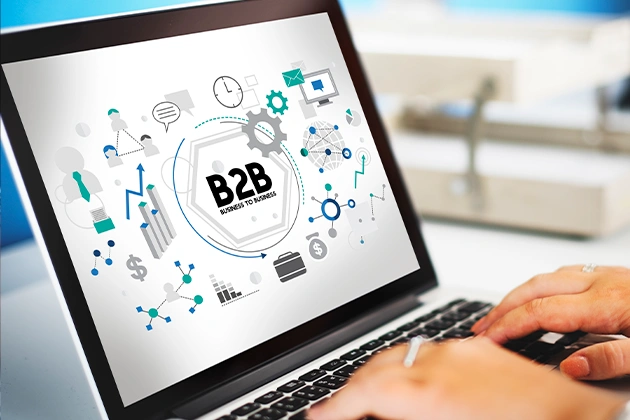When was the last time you replied to a generic, bland sales message? Probably never.
In B2B sales, most inboxes are currently flooded with recycled templates and cold messages that all blur together. Buyers can smell a mass message from the first sentence. That’s where personalization comes in. Not the fake “Hey [first_name]!” kind, but real context. Messages that actually address someone’s role, goals, or recent changes. That’s what opens doors.
Let’s break down why this works so well today, and how to do it without sounding robotic or over-the-top:
1. Why Personalization Matters in 2025’s B2B Sales Landscape?
Outreach used to be about sending as many messages as possible and hoping someone bites. That era is over. Buyers now expect outreach that reflects their world, their role, their challenges, their industry, and their recent actions. They don’t want to feel like a name on a list.
When outreach is personalized:
- Open rates rise
- Replies increase
- Meetings booked are more relevant
That’s why many firms turn to a LinkedIn lead generation company to scale the personal area that humans can’t manage one by one. When you message someone about their pain —not your pitch —you’re speaking in a language they trust.
2. The Data Behind Personalization Success
According to some recent studies, the facts are:
- Personalized emails see 29% higher open rates and 41% higher click-through rates compared to non-personalized ones.
- Across B2B marketing, brands that personalize often report conversion increases of 80% or more.
- A McKinsey analysis also found that companies doing personalization well tend to see 10–15% revenue lift, in many cases higher, depending on execution.
- Another stat: 86% of B2B marketers consider personalized 1:1 content essential in their outreach strategies.
What’s the lesson? Generic outreach is sinking. And tailored, thoughtful messages gain traction.
3. Key Elements of Effective Personalized Outreach
Personalization doesn’t mean just inserting {{first_name}}. The difference lies in layering relevant details. What does this mean?
Well…It’s less about adding someone’s name and more about showing you understand their role, their challenges, or what’s happening in their world. Here’s how to do it right:
- Segment smartly
Group prospects by industry, role (e.g., marketing ops, sales leadership), size, or business challenge. You’ll send more relevant messages this way. - Personalized opening lines, not scripts
A line like “Saw your recent post on X, that caught my eye. I also noticed…” beats, “Hi NAME, hope you’re well.” - Use real context and intent
Pull from their LinkedIn activity, company news, or blog posts. If you see they just launched a product or rebranded, mention that, don’t pretend you didn’t. - Balance automation with human edits
Use templates for structure, but always tailor them before sending. Let automation handle repeatable tasks, not the soul of the message. - Keep it short and actionable
Two or three sentences + a simple ask work better than a long essay. You want to invite, not lecture.
4. Tools and Technology That Enable Personalization
Doing personalization manually is exhausting. Thankfully, tools help you scale without sacrificing relevance.
- Data enrichment platforms (e.g., Clearbit, ZoomInfo) fill in firmographic info.
- CRM integrations keep your prospect data in flow so outreach stays current.
- AI insights suggest personalization triggers, new hires, funding events, and blog launches.
- SDR outsource companies (often part of top lead generation companies) use these tools to support outreach that feels human.
- The next frontier: predictive modeling, real‑time context detection, next-best-action suggestions.
The most effective teams don’t rely on tools alone. They use tech to amplify what’s already working, refining target segments, tracking timing cues, and building outreach that adapts as conversations evolve.
5. Common Mistakes to Avoid in Personalized Outreach
Ironically, “trying too hard” is a frequent misstep. Here is what is often seen:
- Over-personalizing, mentioning irrelevant details just to show you “did research.”
- Flattery that falls flat: “I loved your TED talk” when they never gave one.
- No scalability plan, once you have 100 prospects, your “personalization” falls apart.
- Many B2B lead generation companies fail here: they promise personalized volume, but deliver cookie-cutter messaging instead.
True personalization is about relevance, not flattery or gimmicks. It has to connect business pain with timing and intent. That’s why successful outreach teams obsess over messaging frameworks just as much as contact data.
6. Building a Scalable Personalization Framework
A simple loop that works:
- Research, gather company, role, recent signals
- Personalize, write a custom snippet, or an objective
- Test, A/B test subject lines or opening lines
- Refine, use feedback, response data, and what failed
Templates can help, but build them to flex (slots, optional lines). Continuous iteration ensures your messaging improves, not degrades.
Conclusion
Reaching out to someone in a business context has changed. The day you send something generic is the day your message dies unread.
The best outreach isn’t about flashy tools or clever templates; it’s about paying attention. When done well, it builds trust, elicits real replies, and drives conversion.
If you want to scale this without losing humanity, working with a LinkedIn outreach agency can be the bridge between mass and meaningful.










